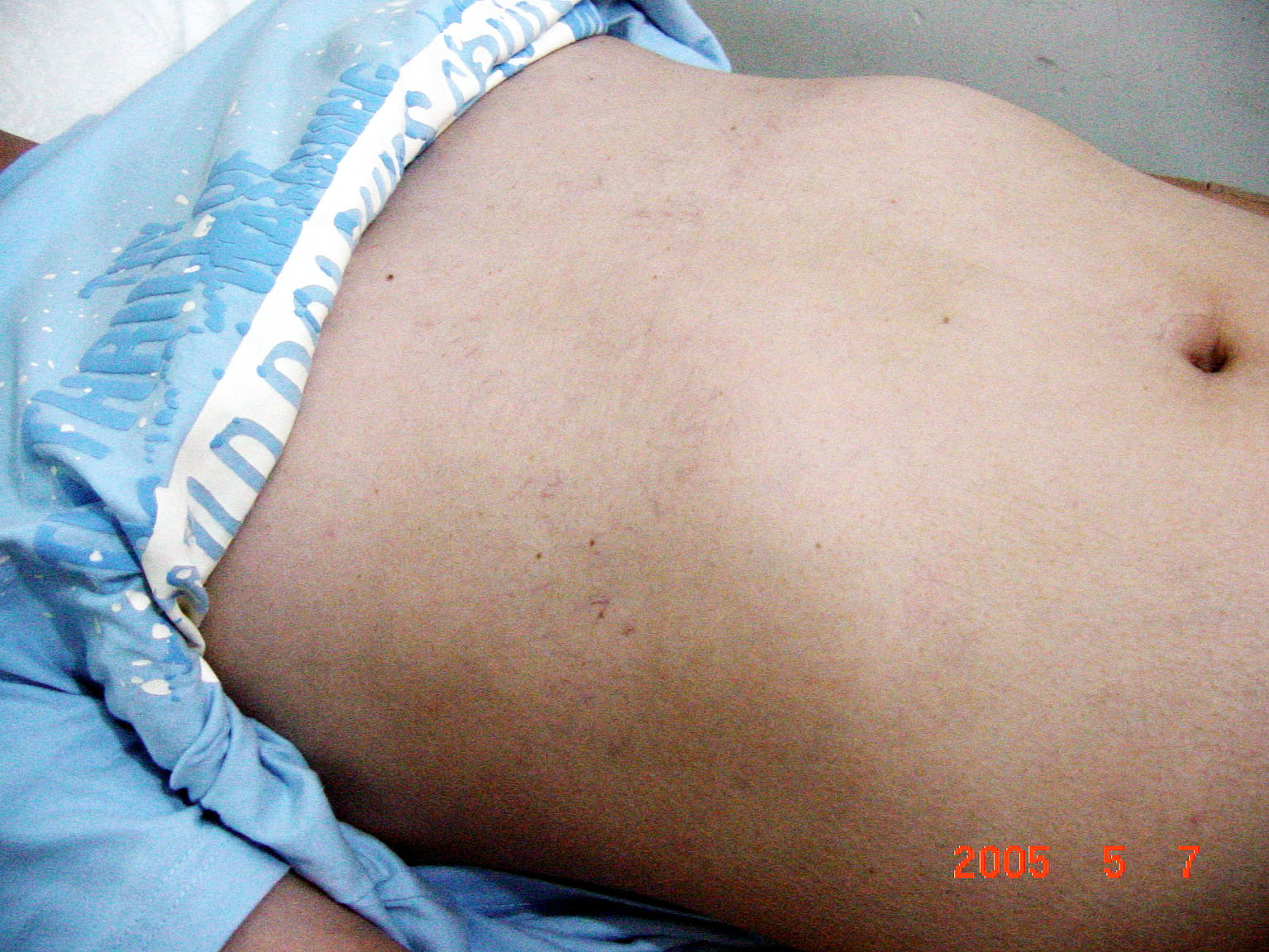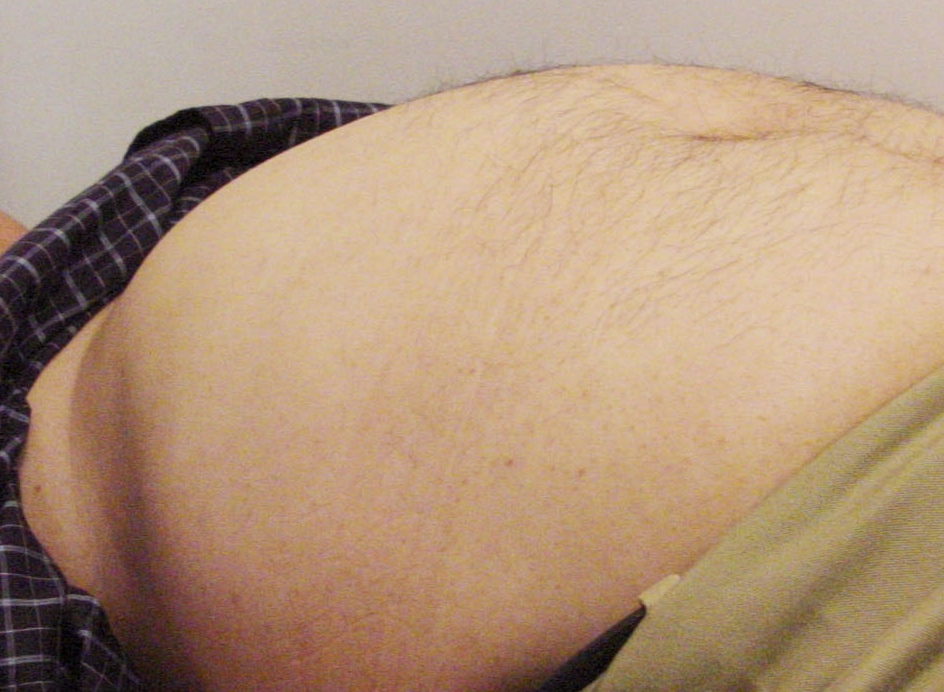08 Abdominal Examination for liver troubles –
are there traces of Hepatophilic Virus in your body?
The most common diagnostic means used by traditional medicine doctors are observation, interrogation, olfaction and pulse feeling. However, it seems necessary to extend the means to include the examination of liver diseases. Drugstore doctors seldom examine the abdomen. In fact, observation and percussion (should be part of pulse feeling) of the abdomen can often find the traces left over by long-term infestation of hepatophilic virus, which can serve as the basis for clinical diagnosis. In examining the abdomen, it is necessary to heed the following points:
-
Whether the skin of the belly is pale and chloasmic? Whether the capillaries under the skin have been expanded ? Whether the veins of abdominal and chest walls have been revealed ?
(Below: skin of the abdominal wall desquamates)


Ascending varicose veins are often found on the front walls of chest and abdomen and also on the sidewalls and the back. Such symptoms are often the indictors of hepatojugular reflux and portal hypertension caused by chronic active hepatitis or cirrhosis of the liver, as only after the collateral circulation has been formed, it is possible to make the subcutaneous capillaries to reveal or expand. By observation, it is necessary to pay attention to the skin of the abdominal wall, whether it is dry, desquamates or has pigmentation. * Whether the bilateral ribs have been deformed? * Whether the bilateral ribs (hypochondriac region) are obviously asymmetric? If they are asymmetric, it is often an indication of long-term hepatomegaly resulting from the infestation of hepatophilic virus (especially during the infant stage or childhood). The right ribs obviously expand flatly outward and the right hypochondriac region obviously depresses and deformed, with the vertebrocostal angle protruding forward. Taken the extended line from the navel as the central line, the two sides are obviously asymmetric, with the right being bigger than the left side.

Abdominal distention, intestinal tympanites and frog-belly
People who used to suffer from chronic hepatitis often have abdominal distention, intestinal tympanites, hepatic edema and secondary obesity, with body weight increasing obviously in a short period of time (there are also such symptoms for acute icterohepatitis which was not systematically treated) and the belly circumference increasing. There is air in the abdomen, which is called intestinal tympanites, accompanied by obstructions in the stomach and intestines, with frequent bowels, especially after meals, belching and winds.
If no proper treatment is given, the pressure in the intestine chamber increases, the intestinal wall has become thinner, the tensile strength of the muscles of the intestinal wall has been reduced and even the umbilicus has become shallow and even protruding, the movement of the stomach and intestines is obstructed. The contents of the intestinal chamber have become over-fermented. When lying flat, the whole belly protrudes obviously and spread toward the two sides, like the belly of a frog.
